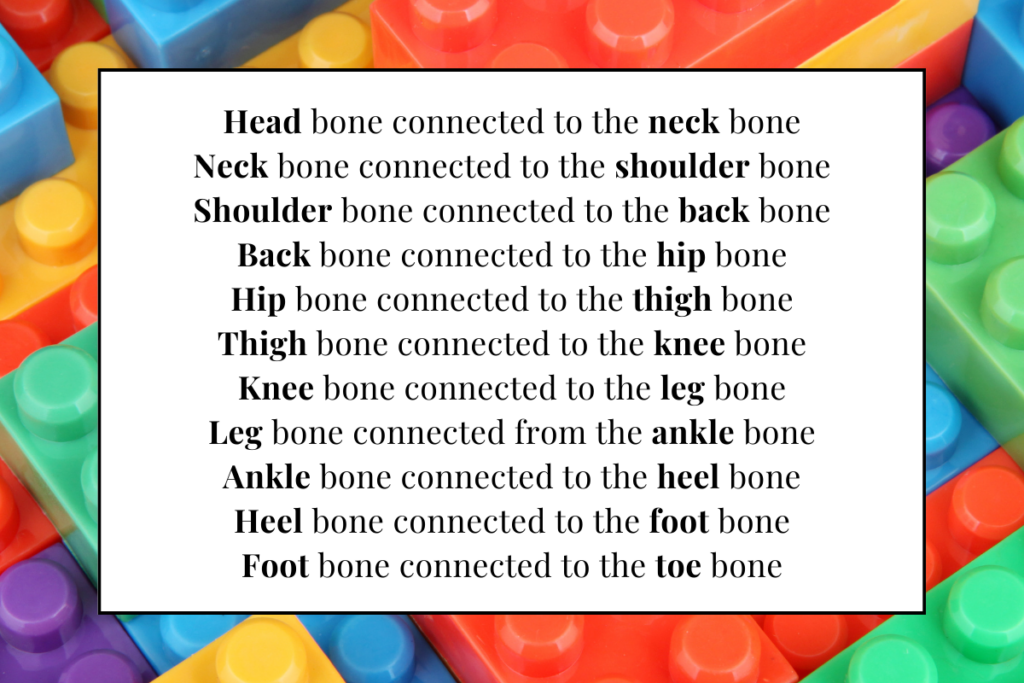
On your way to work you pull into the drive-through line at your favorite coffee shop. You order your usual, then you glance at the seat next to you to realize you put your wallet in your laptop bag behind the passenger seat. 🤦♀️
Erg. You reach back behind you. You strain. You grasp. You scream, “I need my coffee!!!”
So what’s stopping you besides the confines of the car?
Your chest muscles: the pectoralis major and pectoralis minor.
Nothing you can do about it. So, you give up immediately and leave the line.
Kidding. You don’t function without coffee 😜 So, you do all the things, get your wallet, and pay so you can finally sip your way to awakeness.
We’ve all been in some form of that situation, desperately grasping for something behind us, with our chest muscles waiting around the corner to resist every one of our attempts.
Unfortunately, the daily grind is contributing to our short chest muscles. We spend most of our day seated, with our arms on a keyboard, holding our phones, or gripping our steering wheels. All of these things, make our pec muscles tighter.
This doesn’t only affect our ability to reach behind us, it can also lead to a list as long as the fine print at the bottom of a pharmaceutical commercial:
Side effects include but are not limited to sore neck and shoulders, poor posture (aka tech neck, text neck, or forward head), thoracic outlet syndrome, straightening of the neck – loss of cervical lordosis (aka cervical kyphosis or military neck), tension headaches, migraines, and disc deterioration.
Oh Man, that’s a lot! (more on all of this later)
So what’s an easy way we can reverse these effects? Chest stretches or pectoralis myofascial release.
I love this specific release. You can do it at the office, or at home. It’s simple to do. And it only takes a min (or less).
Check out this blog post, where I go into more detail on myofascial release and how it works. Want a short breakdown? This is what you need to know:
To use an analogy think of the clothing you wear as the fascia around your muscles:
Skin-tight pleather = hard to move (don’t bust a seam!)
Loose fitting PJs = easy to move (and super comfy!)
Simple! Right?
** Reading Break ** This blog post DOES contain affiliate links of related products I love and they might even be pictured. If you click on a link and purchase a product (or service) it costs you nothing, you MIGHT even get a discount, and I MAY even receive a SMALL commission. This helps me to buy and drink coffee ☕️ in order to keep me awake and provide you with amazing free content 💗 Thank You for supporting my content 💋
For most myofascial release techniques (but not all) you need either a ball or a foam roller and something to roll against. For this particular technique, you need a wall and a ball. Keep reading to get the specifics.
What you need:
This one is pretty self-explanatory, but what do you need to look for in a good wall?
You don’t need to run out and buy new balls. The ones you have work fine. For this “exercise” (it’s not truly an exercise, but you know what I mean… activity? Drill? thing?) You might want to use a larger ball for better results.
I have another post on Neck Myofascial Release where I go into great detail about what balls to use/buy. The balls recommended there are the most versatile and can work all over the body.
For this exercise, a general myofascial release ball, tennis ball, or lacrosse ball will work fine, but if you already of a collection or are looking to splurge, I recommend using a ball that is larger like:
Tune Up Fitness Alpha Ball – This ball is larger than average and provides a more diffused pressure. It feels more soothing and less pointed and is great for any autoimmune condition, like fibromyalgia. Because it’s larger it is easier to use for this myofascial release technique, especially with tight and rounded shoulders.
If you didn’t want to flip over to the other post, but you need to buy a more “all-purpose” ball, I would recommend these:
Tune Up Fitness Therapy Plus Balls – These are my favorite. They’re like the goldilocks for myofascial release balls: not too big, not too small, not too firm, and not too soft. They’re just right. Best of all, it’s a 2-pack! And the mesh sleeve it comes in can be handy for rolling out the spine and muscles around long bones.
Similar to the neck myofascial release post, you may want to read both the post and watch the video
This exercise releases the
*Special Note* If you have challenges getting your chest to connect to the ball on the wall (large bust, pronounced kyphosis, etc), try placing a block on the wall and the ball on the block. This will give your head more space and clearance from the wall.
Between the video, description, and photos I know you’ll find success. Did you watch the video? How did it go?
If you found it useful sign up for my newsletter below for more tips and tricks to reach your wallet in your back seat.
Find out what’s going on… You know you want to… Privacy is important, I won’t sell your info, I promise.

So you landed here because your neck, shoulders, or upper back hurt, but I’m telling you to stretch your chest muscles. 🤔
Just as the song goes, everything is connected.
What happens is…
Monday through Friday you’re being a productive modern human slumping over your keyboard. Gripping the steering wheel as you scuttle to your workspace to be that productive human. And while you’re mentally trying to escape from being a productive human, you’re holding your mobile device scrolling through social media.
All this seated, arms forward, shoulders rounded position shortens your chest muscles: the pectoralis major (responsible for moving the shoulders closer together – abduction), and the pectoralis minor (internally rotates those shoulders).
Plain and simple, your everyday position will permanently draw your shoulders closer towards one another while rounding the shoulders inward, if you don’t do something about it.
Well, if your chest muscles get shorter and pull your shoulders closer together, guess what’s going to happen to the backside of your body?
The upper back muscles will get longer.
Unless you focus on exercising these muscles (specifically the rhomboids, middle trapezius, and lower trapezius muscles) they generally get weaker.
*Side note* Even if you do focus on working the muscles for scapular retraction (those ones up 👆 there), if you don’t ALSO work on stretching the chest muscles you won’t be able to engage the muscles through the entire range of motion (ROM). You could even pull or tear a pectoralis muscle 😳 Ouch!
(The muscle between your shoulder and the base of your neck is technically a back muscle called the upper trapezius.)
When your back muscles (rhomboids, middle and lower traps) get weak, something else needs to pick up the slack.
You know the muscle you go to squeeze when your neck or shoulders hurt?
Yeah, that one. The upper trapezius. That muscle takes over. [And it’s why you always find yourself squeezing it.]
You knew that was coming right?
When your shoulders are rounded forward, your back muscles get longer, your head and neck have to compensate. The muscles in the back of your neck get shorter, and the muscles in the front of your neck get longer. Your head naturally tilts up as your neck (cervical spine) becomes straight. This is called all sorts of names:
No matter what you call it, it can have lasting negative effects.
See it now?
Let’s be real. Most of us don’t go “Oh my chest muscles are short and need to be stretched.” You might notice it every once in a while when you’re trying to reach for that thing in the back seat, but for the majority of us, our pec flexibility isn’t a bother.
But do yourself a favor, and give them a little love with a stretch or this myofascial release.
Muscle shortening, posture shifting, and how it leads to neck pain, headaches, and migraines is explained in detail in this section. The shortened version goes like this:
To prevent all of these issues from happening use this exercise to keep the pectoralis major and minor nice and long so your shoulders can move away from the midline of your body and away from your ears without effort.
In return, the muscles of the neck stay soft and won’t pull on your skull or compress your nerves. Your back muscles can then draw your shoulder blades towards one another and down the back with ease since they’re not fighting your chest muscles. 🙌
And you can stand tall with confidence now that you can move freely.
Thoracic outlet syndrome is a condition where something (bones, muscles, etc) compresses the nerves running from the neck to the armpit (on the front side of the body). Many people with this condition experience tingling, pain, and numbness in their fingers and hands.
Have you ever slept on your arm wrong and woke up feeling “pins and needles” in your hand?
It’s a little like that.
Thoracic outlet syndrome happens for a variety of reasons, but a common culprit is tight chest muscles.
Stretching can be helpful, but most stretches lengthen the entire muscle and can compress the nerves already being compressed.
This myofascial release is a great alternative because it allows you to massage small parts of the muscle at one time preventing complete numbness and pain while gaining muscle length.
Your shoulders have the ability to move your arms in all the ways:
Your chest muscles help with adduction and internal rotation (and a few other movements). If the muscles are tight it becomes harder for your arms to move in ALL the other DIRECTIONS.
Did you need to get that paper in the back seat of your car? Abduction is needed, and tight pecs don’t help 😏.

It’s important to note stretching and releasing is only part of the solution. The ultimate remedy is to find balance throughout the body. Think about stretching and strengthening the front and back, and the left and right sides of the body.
A well-balanced body is a healthy body.
*Want some more information on the best way to approach stretching and strength? Go to the Pain, Headaches, Migraines? Here’s Your Action Plan 🙌 section in the myofascial neck release post.
This exercise is helpful for everybody. What’s your reason? For me, it’s often when I hand one of my kids “second breakfast” from our go-to drive-through coffee shop, while I contently sip my coffee in silence on our drive to go rock climbing (another reason to stretch those pec muscles regularly).
Sign up for my newsletter for more helpful tips on how to create balance in your life.
Find out what’s going on… You know you want to… Privacy is important, I won’t sell your info, I promise.

